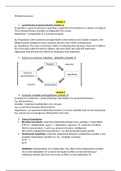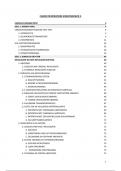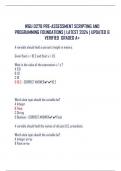Samenvatting
Summary Meth. Meas. and Statistics (424023-B-6) (Methods part only)
All Method lectures given by Guy Moors are included in this summary. The statistics summary is also available on my account. (You can also buy them in a bundle, which is cheaper). If you are looking for an overview of all the slides with additional information told in the lectures, this summary sho...
[Meer zien]













